Excerpts from Jim Conrad's
Naturalist Newsletter
entry dated April 22, 2023, issued from near Tequisquiapan, elevation about 1,900m (6200 ft), Querétaro state, MÉXICO
(~N20.55°, ~W99.89°)
CHTHAMALIA OJADAPANTHA, MAYBE
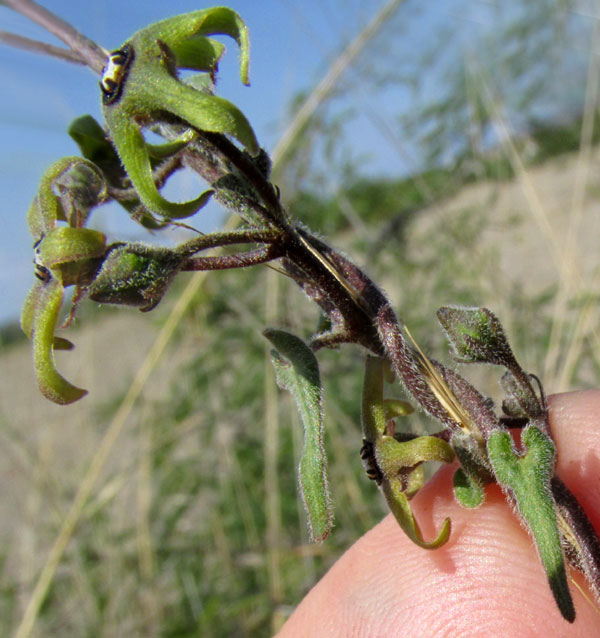
Inside a bushy mesquite kept about a meter tall by livestock nibbling on it, along a trail across a large, grossly overgrazed, late-dry-season-scorched, scrubby field, the above little vine tightly wrapped around a spiny stem. A glance at the flowers and leaves, the latter arising opposite one another at stem nodes, announced one of many species of "climbing milkweeds," which are twining member of the old, abandoned Milkweed Family, the Asclepiadaceae, now merged into the large Dogbane Family, the Apocynaceae.
I like finding climbing milkweeds because many years ago I served on expeditions to various countries, from Madagascar to Argentina and Baja California, specifically to collect them for scientific studies. I have friends still studying and publishing on them, so I always hope to find something useful to them.
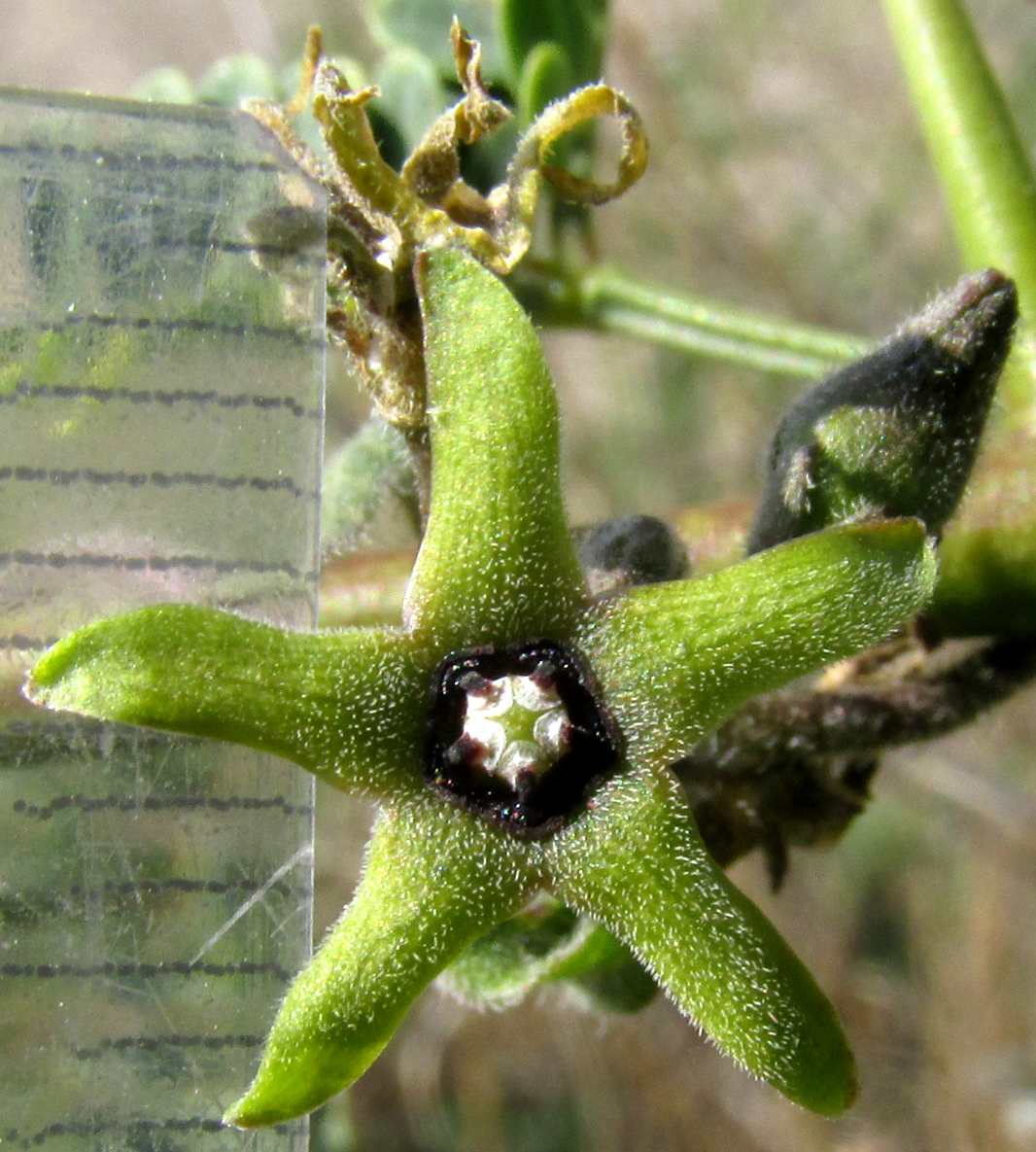
Knowing my friends would like seeing good pictures where the sizes of things could be measured, the above picture shows that the hairy-lobed corollas are unusually small, only about 11mm across when seen from above. However, if they were flattened, they'd reveal themselves as wider. Below, you can see how the lobes curl downward and inward:
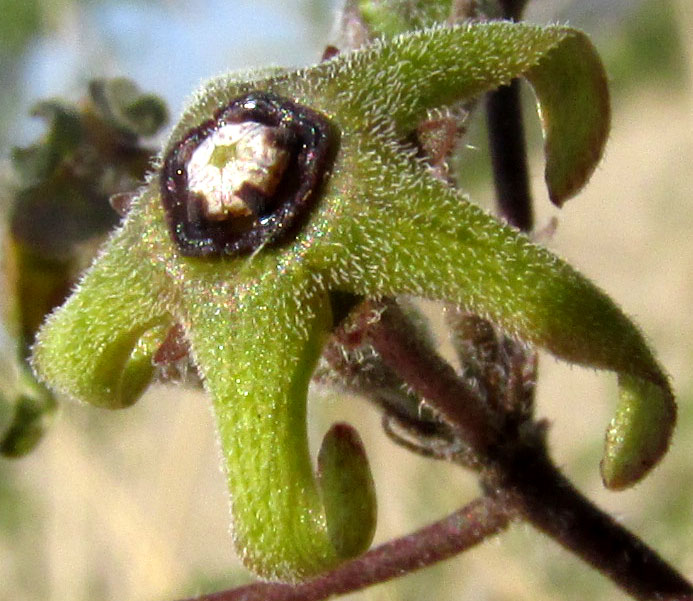
When I enlarged the above picture on the computer screen, I was struck by the fact that the slender, dark purple "corona lobes," maybe analogous to "horns" in many milkweed-type flowers, are squared at their tops, not coming to a definite tip as in most cases. Square-tipped "horns" were seen on flowers of this vine photographed at other times, too, so it's not a matter of an insect chewing on them. Another remarkable feature is documented below:
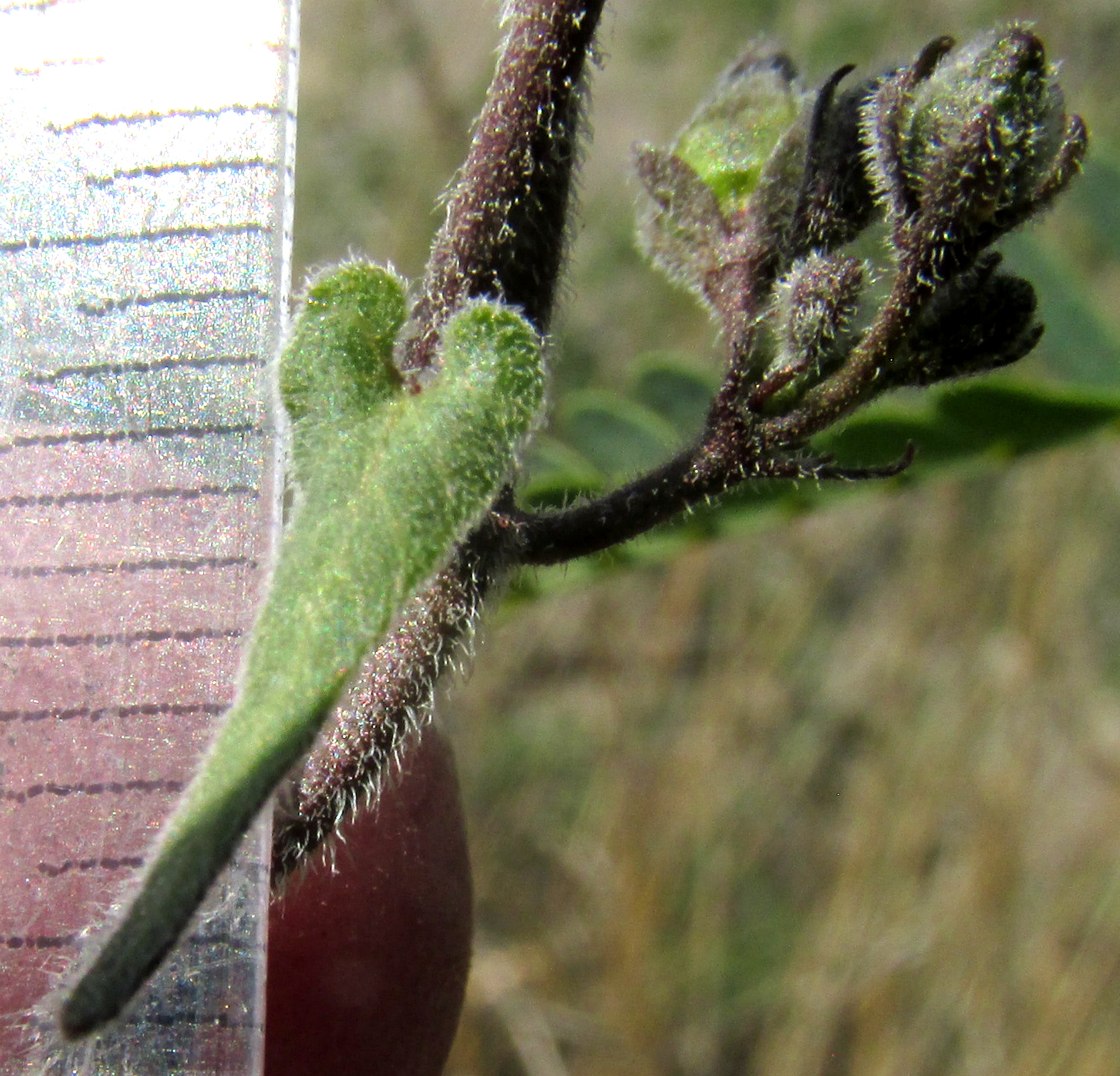
That hairy leaf, typical of all the rest, is only 10-11mm long. Next, I needed to show that the surface of the stem at the vine's base developed corky longitudinal ridges. The branching node was about 6mm across.

Finally, showing the little vine's habitat, here's a picture of me taking the above pictures:
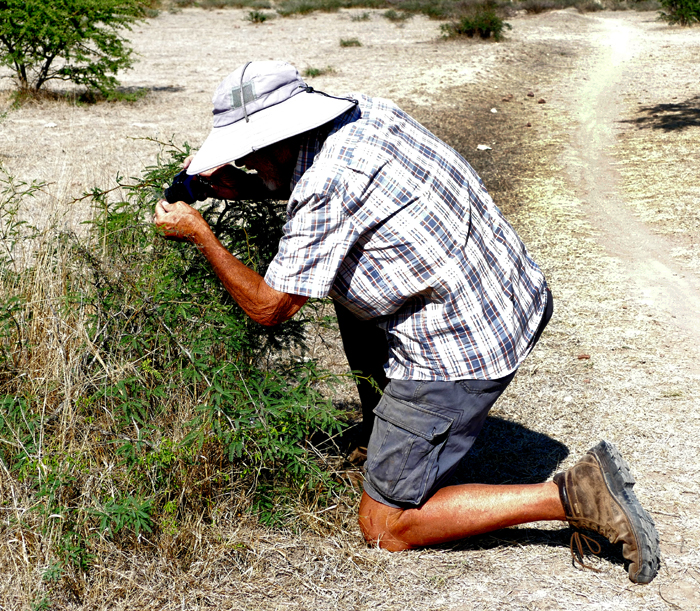
Knowing that my Venezuelan friend Gilberto Morrillo studied this group -- taxa traditionally assigned to the genus Matelea -- I sent the above pictures to him. Gilberto and I met around 1973 when he was studying and I was working at the Missouri Botanical Gardens in St. Louis. Quickly Gilberto determined that this looked like a species that had been introduced to science only in 2020, by Leonardo Osvaldo Alvarado-Cárdenas and others, in a work entitled "Matelea ojadapantha (Apocynaceae; Asclepiadoideae; Gonolobeae; Gonolobinae), a new species from México." Gilberto then added that just last year Alvarado-Cárdenas had transferred the new species to a different genus, so now the name would be CHTHAMALIA OJADAPANTHA.
Gilberto sent me the publication in which the species was named and described by Alvarado-Cárdenas and others, and in that I see that the known distribution of Chthamalia ojadapantha is just a small, semiarid region at the western base of the Eastern Sierra Madres both here in Querétaro state and across the border in Hidalgo state, and then again in Oaxaca state in southern Mexico.
Also in that paper, both the technical drawing and pictures of the flower show that the purple items possibly analogous to "horns" in other climbing milkweed flowers are longer than ours and gradually taper to a sharp point, instead of being squared, like ours are. Leaves shown in that paper also are about twice as long as ours. I have no idea how to account for these differences, and will be glad to see how the experts deal with it.
That tongue-tying genus name Chthamalia actually is an old one, published in 1844 by the Swiss botanist Augustin Pyramus de Candolle. In the paper in which the genus was erected -- the original can be viewed online -- de Candolle explains that the name Chthamalia derives from the Greek χθχμαλδς, which in de Candolle's Latin becomes humifusus, which means in English "sprawling on the ground," which makes sense if some of the genus's species sprawl instead of twine, which is conceivable. In the species name, I think that pantha is an alternative form of the Greek πάντᾰ, meaning "everywhere," but the ojada, which I guess to be the Greek οχαδα, remains a mystery to me.
Whatever the case, this plant -- the only one I could find in the area, so it's not very πάντᾰ -- is fascinating. It is seldom occurring, occupies the tip of a branch of the phylogenetic Tree of Life that's wildly and apparently somewhat bafflingly proliferating into quirky species, and who knows how our vine's "truncated horns" and minuscule leaves fit into it all?
We'll wait to see what my friends have to say about it.